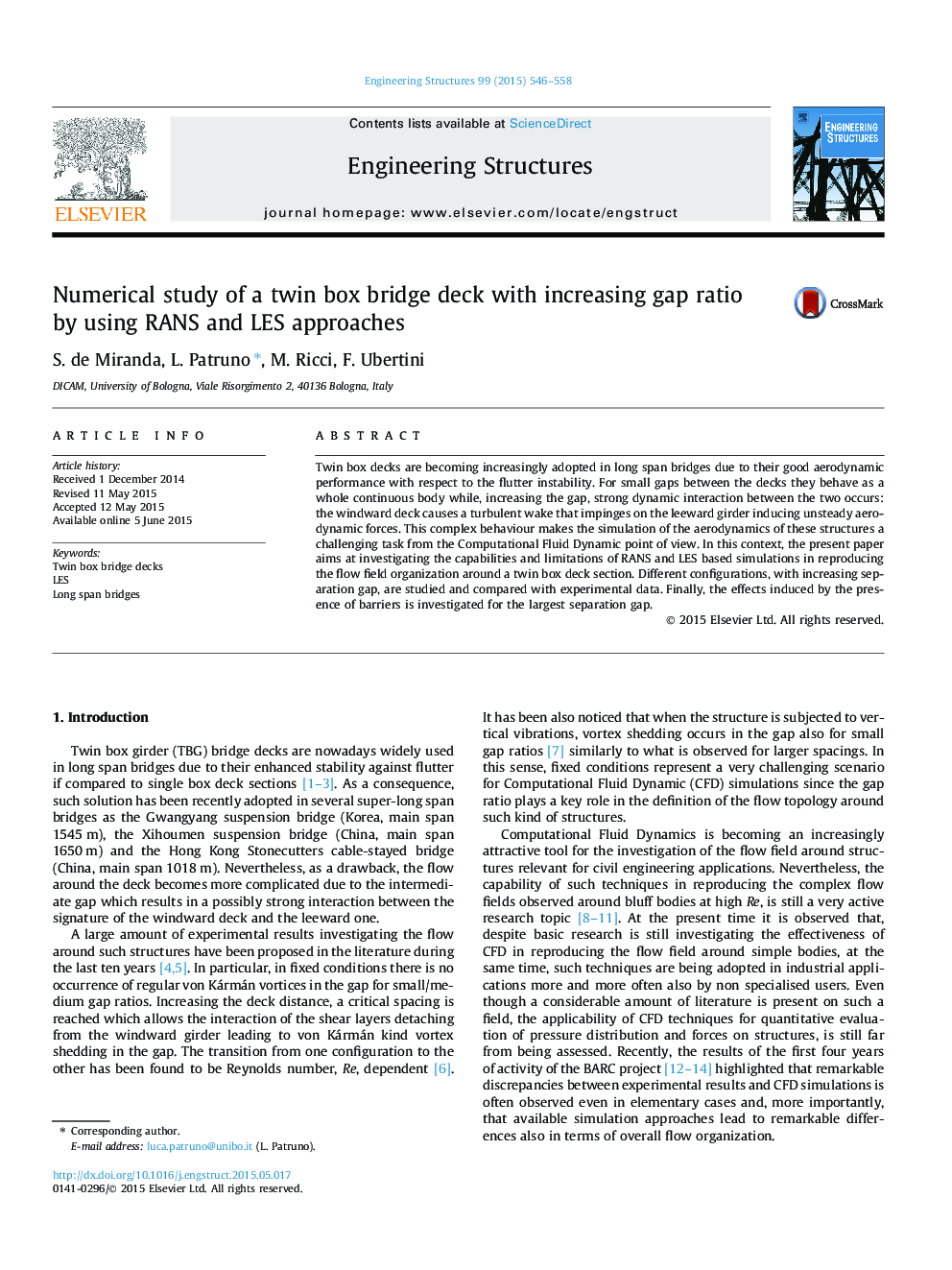| Article ID | Journal | Published Year | Pages | File Type |
|---|---|---|---|---|
| 266203 | Engineering Structures | 2015 | 13 Pages |
•CFD capabilities in reproducing flows around a twin box girder deck are analyzed.•RANS and LES simulations are performed for four different gap ratios and compared with experimental results.•Both models do not properly predict the flow transition between small and large gaps.•The effect of windshields are analysed for large gap ratios.
Twin box decks are becoming increasingly adopted in long span bridges due to their good aerodynamic performance with respect to the flutter instability. For small gaps between the decks they behave as a whole continuous body while, increasing the gap, strong dynamic interaction between the two occurs: the windward deck causes a turbulent wake that impinges on the leeward girder inducing unsteady aerodynamic forces. This complex behaviour makes the simulation of the aerodynamics of these structures a challenging task from the Computational Fluid Dynamic point of view. In this context, the present paper aims at investigating the capabilities and limitations of RANS and LES based simulations in reproducing the flow field organization around a twin box deck section. Different configurations, with increasing separation gap, are studied and compared with experimental data. Finally, the effects induced by the presence of barriers is investigated for the largest separation gap.
